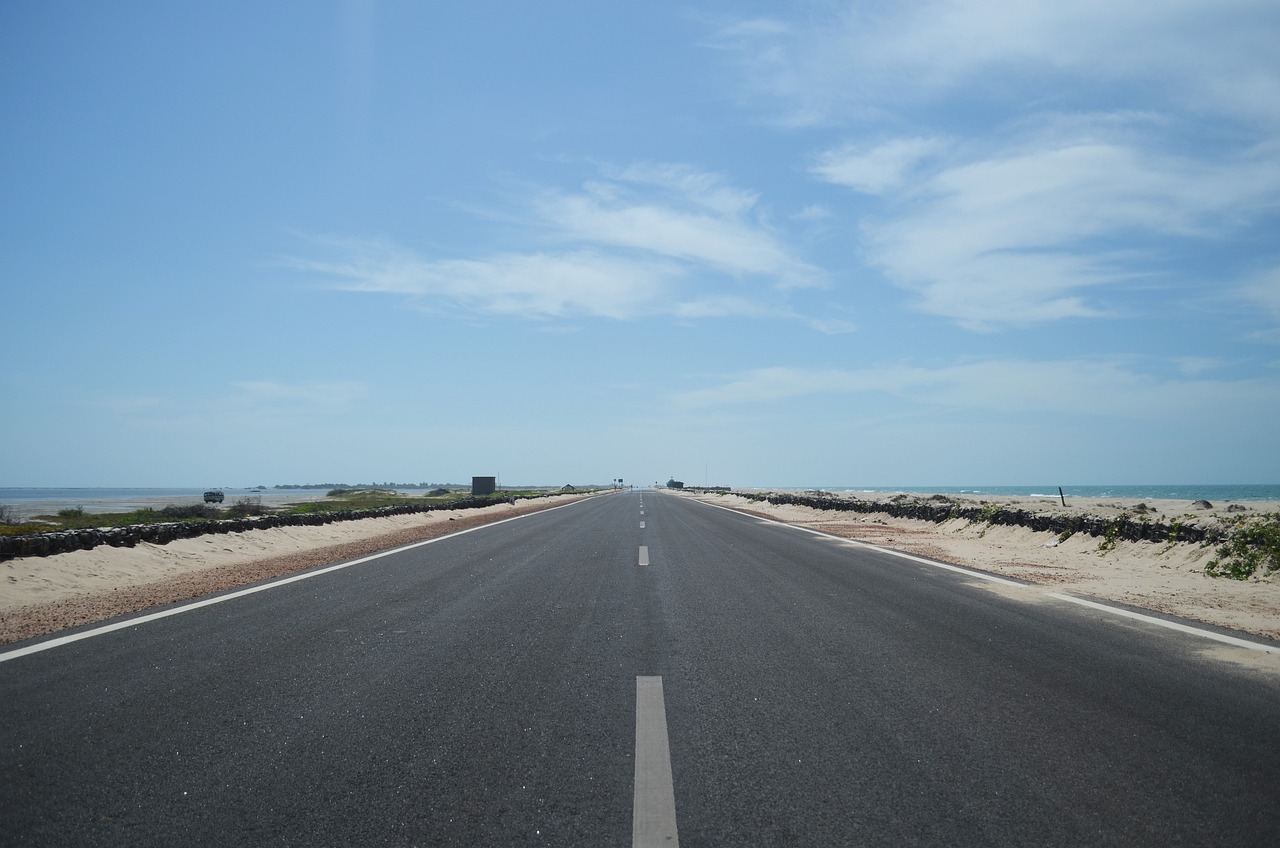A perfect blend of captivating architecture and spiritual significance, Rameshwaram Temple, also known as the Ramanathaswamy Temple of Tamil Nadu, is dedicated to Lord Shiva. It also claims to be one of the 12 Jyotirlinga temples in India. Not only spiritually, but Rameshwaram temple is also architecturally attractive. With the world’s longest corridor and immaculate carvings on the pillars, it is surely a treat for your eyes.
The Shivalinga in the Rameshwaram temple was installed by Lord Rama, but the construction was led by several rulers over the centuries. There are two lingams inside the temple- Ramalingam and Shivalingam. The latter is still worshiped first to preserve the words of Lord Rama. Apart from the daily Abhishek and pujas performed with great enthusiasm, there are also festivals worth seeing.
Rameshwaram Temple History
There is a very interesting story related to the Rameshwaram temple. It is believed that Lord Rama killed a Brahmin Ravana to save his wife Sita. He wanted to end the ‘dosh’ of killing a Brahmin. Therefore, on the advice of the sages, Lord Rama along with his wife and brother, Lord Lakshmana installed a lingam and worshiped to wash away his sins.
He wanted to worship the biggest lingam and hence, he asked Hanuman to bring it from the Himalayas. This was taking a lot of time and hence, Sita made a small lingam, Ramalingam out of sand which is still in the sanctum sanctorum. Hanuman was disappointed as Rama did not worship the lingam brought by him. Hence, Lord Rama placed his linga next to Ramalinga and named it Shivalingam.
In the beginning, the Rameshwaram temple was just a shed. The present structure is attributed to the efforts made over the centuries by the rulers of the Sethupati dynasty. In the seventeenth century, Dalvai Sethupathi built a part of the eastern gopuram. In the late eighteenth century, the world-famous third corridor called Chokkatan Mandapam was constructed by Muthuramalinga. The contribution of the Jaffna kings of the Sethupati dynasty to the Ramanathaswamy temple was also commendable. King Jayavira Sinkarian helped in sending stone blocks from Koneswaram temple for the restoration of the temple. His successor Gunavira Sinkariyan looked after the structural development of this temple.
Rameshwaram Temple Architecture
Rameshwaram Temple has attractive architecture that attracts tourists from all over the world. Like all other temples in South India, it has a high wall or madil that guards the temple against all four sides. The wall measures approximately 865 feet from east to west and 675 feet from north to south. The long corridors running between the huge colonies on a five-foot-high platform form part of the temple’s interior.
The second corridor is made of sandstone pillars, beams, and a roof. To the west is the third corridor which leads to the Setumadhav temple. The total length of these corridors is about 3850 feet and is considered to be the longest in the world. The outer corridor of the Rameswaram temple has 1212 exquisite pillars and the Rajagopuram is the 53-meter tall main tower. The main halls of the temple are Anuppu Mandapam, Sukarvar Mandapam, Sethupati Mandapam, Kalyana Mandapam, and Nandi Mandapam.
There are two lingas inside the temple. The first main deity is Ramalingam and it was built by Sita. The second, Vishwalingam, was brought from Kailash by Hanuman. In addition, twenty-two shrines or holy water bodies are located inside the temple complex. Devotees take baths in the shrines to get rid of their sins. Chief among these is Agni Teertham.
Festivals at Rameshwaram Temple
The major festivals which are celebrated with pomp in Ramanathaswamy temple are-
- Maha Shivaratri- It is a 10 days festival and takes place in February-March. On this day, Lord Shiva married Parvati and saved the world from darkness and ignorance. This festival is celebrated with great enthusiasm in the temple. The deities are carried on the streets of the city in chariots and devotees come together to worship the idols.
- Vasantotsavam- This festival celebrated between May and June is celebrated for 10 days. It welcomes the spring season and the deity is worshiped with sandal paste, flowers, incense, and abhishekam of rose water.
- Ramalinga Pratishtha Utsav- It is also a 10-day festival celebrated between June and July. This festival marks the day when the Shivling created by Sita was installed. The deities are taken out in procession.
- Thirukalayanam- It is a 17-day festival celebrated in July-August which also includes a car procession.
- Navratri- Held in August-September, it is a 10-day festival that celebrates the nine forms of Goddess Durga. The tenth day is celebrated as Dussehra.
- Arudradarshanam– A 10-day festival celebrated between December and January. The festivities are held at Uthirakosamangai where devotees experience and imagine the breathtaking and stunning sight of the unveiling of the sandalwood-covered Nataraja statue throughout the year.
Rameshwaram Temple Timings and Entry Fees
Temple timings are-
Morning – 5:00 AM to 1:00 PM
Evening – 3:00 PM to 9:00 PM
The types of regular worship with their timings are- (Name of Puja and Aarti/Aradhana timings)
Palliaraya Deepa Aradhana – 5:00 AM
Spadigaling Deepa Aradhana – 5:10 AM
Thiruvanantal Deepa Prayer – 5:45 AM
Villa Pooja – 7:00 AM
Kalasanthi Puja – 10:00 AM
Uchikala Puja – 12:00 PM
Sairatcha Puja – 6:00 PM
Arthjama Puja – 8:30 PM
Palliyarai Puja – 8:45 PM
If you want to participate in the abhishekam, aarti, and rituals, then for each ritual you will have to pay the following price-
108 Kalasa Abhishekam – INR 1000
108 Sangbeeshegam – INR 1000
Rudrabeeshegam – INR 1500
Panchamrit Abhishek – INR 1000
Swami Sahasranama Archana – INR 200
Ambal Sahasranama Archana – INR 200
Swami Nagaparnam – INR 200
Ambal Kavasam – INR 200
Tips For Visiting Rameshwaram Temple
- Tourists are expected to dress well. Men can wear a kurta and dhoti or pajama while women should wear a saree or suit.
- No advance booking is available for attending the worship and rituals of the temple. After reaching the temple, you have to buy a ticket from the counter.
- Take care of your belongings as Rameswaram is a crowded place. You can be cheated easily.
How To Reach Rameshwaram Temple
Rameshwaram Temple is located in the heart of Rameshwaram city and can be reached by almost all modes of transport. Autos are the major source of transportation within the city and traveling to the temple by auto is easy. Just be sure to check if they calculate fares by the meter.
If you want to travel in comfort, you can hire a cab or rent a car. You can choose the car according to the number of people. Book cabs for half a day or a full day to avoid waiting for charges.
Similar Articles
- Rameshwaram – A collection of Lord Rama temples
- Temples in Kanchipuram
- Jagannath Temple In Puri
- Erode: Turmeric City of India
Frequently Asked Questions About Rameshwaram Temple
Q. What is special about Rameshwaram temple?
A – Rameshwaram temple is famous for being part of one of the twelve Jyotirlingas (linga of light) of Lord Shiva in India. The temple is also famous for the fact that it is the southernmost ‘Jyotirlinga’ of India which makes it one of the top religious places in India.
Q. Which god is Rameshwaram temple?
A – The sacred abode of the Hindu god, Shri Ram (addressed with all respect and humility) is a virtual paradise for the devotees. No Hindu’s journey is complete without a pilgrimage to both Varanasi and Rameshwaram, which is the culmination of their quest for liberation and is coveted by the epic ‘Ramayana’.
Q. Why is Rameshwaram famous?
A – Attracting thousands of pilgrims every year, Rameshwaram is famous for the Sri Ramanathaswamy Temple dedicated to Lord Shiva. Dotted with many other religious places, this serene city is an ideal spiritual resting place.
Q. Is Sri Lanka visible from Rameswaram?
A – It is on Pamban Island, separated from mainland India by the Pamban Channel and about 40 km from Mannar Island, Sri Lanka. It is situated at the tip of the Indian peninsula in the Gulf of Mannar.
Q. Which is the best time to visit Rameswaram?
A – Hence, the best time to visit Rameswaram would be from October to April as you will get pleasant weather during this period. Winters in Rameswaram are mainly pleasant as the minimum temperature in this season usually reaches around 17°C.
Q. What should I wear in Rameshwaram temple?
A – The dress code will be followed in Rameshwaram temple. You can wear any formal wear, however, a dhoti or pajama is more recommended for men. Saree or churidar will work for women.
Q. How much does it cost to walk to Rameshwaram Temple?
A – Entry Fee – Officially you have to pay only Rs. 50/- for one person and walk to 22 different wells inside the temple. Unofficially there are people who charge 150 to 250 per person, they come with you to all the wells and make sure you get a bucket from each well.
Q. How many days are enough for Rameswaram?
A – Before entering Rameswaram when you cross the road bridge, you look and see the Pamban rail bridge. To answer your other question – many people cover Rameswaram and Dhanushkodi in a day. Two days and one night are enough for a more comfortable journey.
Q. How can I reach Rameshwaram Temple?
A – The nearest airport to Rameswaram is Madurai Airport, which is about 149 km from the city. Tuticorin Airport is also located at a distance of 142 km which is one way to reach Rameswaram by air. Buses, cabs, and hired taxis can be hired from outside the airport to reach the city and much more.
Q. How can I go to Ram Setu?
A – The Adams Bridge can be reached by driving from Rameswaram to Dhanushkodi as there was no road connectivity after the 1964 cyclone. From Dhanushkodi, visitors can reach the Ram Setu bridge by local van. Here, tourists can visit the local temples and see the floating stones used in the bridge.
Q. Is one day enough to visit Rameswaram?
A – Yes, you can see all the places in/around the temple in a day, it is better if you reach this holy place early in the morning to watch the sunrise. over a year ago.
Q. Is it mandatory to take bath in Rameshwaram?
A – Taking a bath is not mandatory. When one visits a holy place, he is advised to take bath in 22 pilgrimage wells. It is believed that taking a bath in the holy wells washes away our sins.
Q. Can we walk on the Ram Setu bridge?
A – Yes, the water is very shallow and can run for some distance on the structure.









